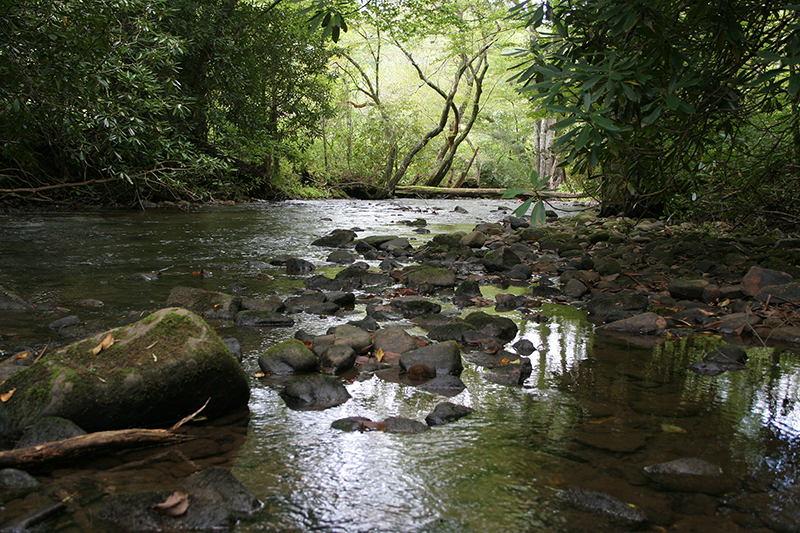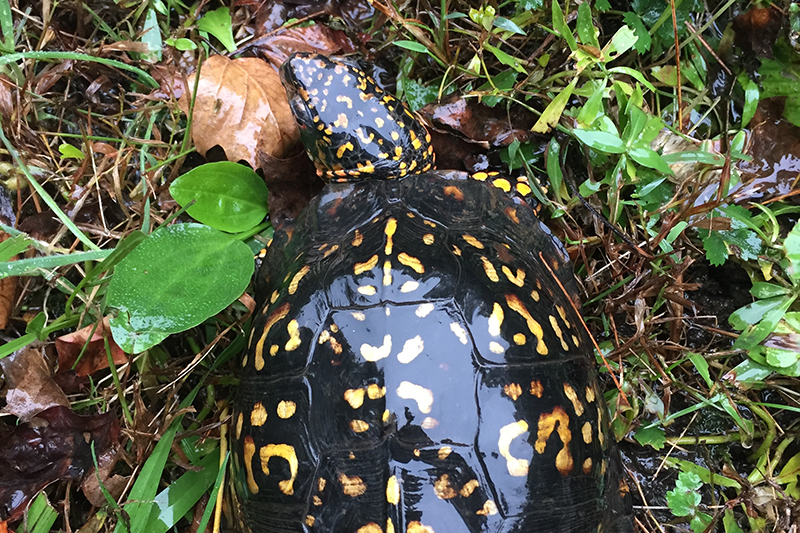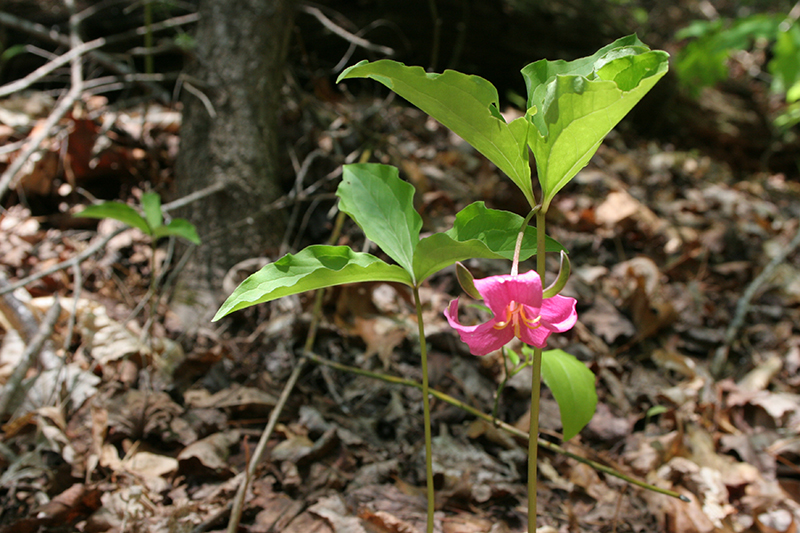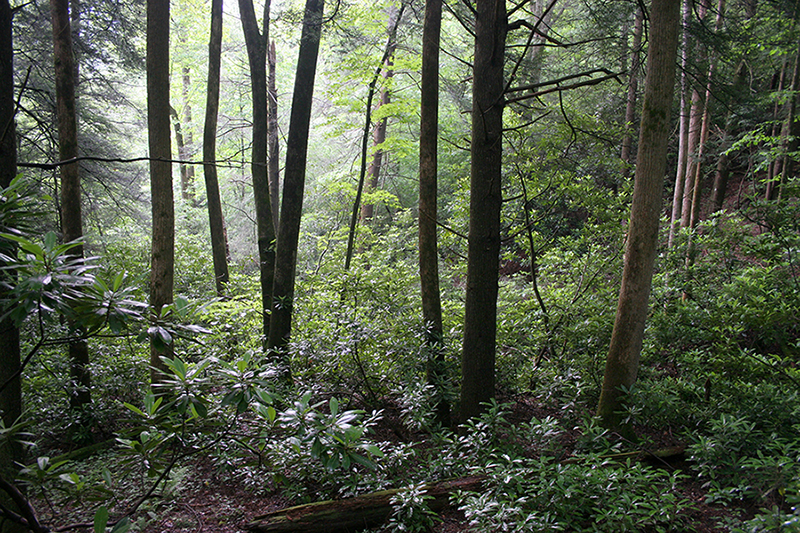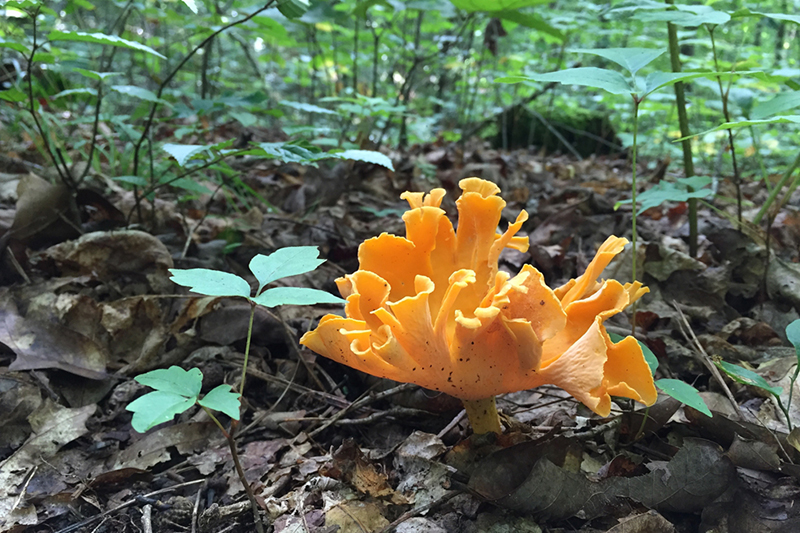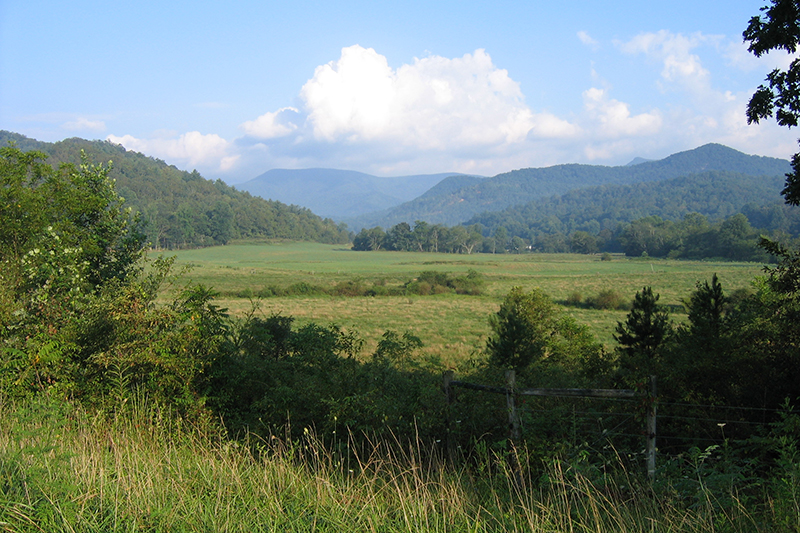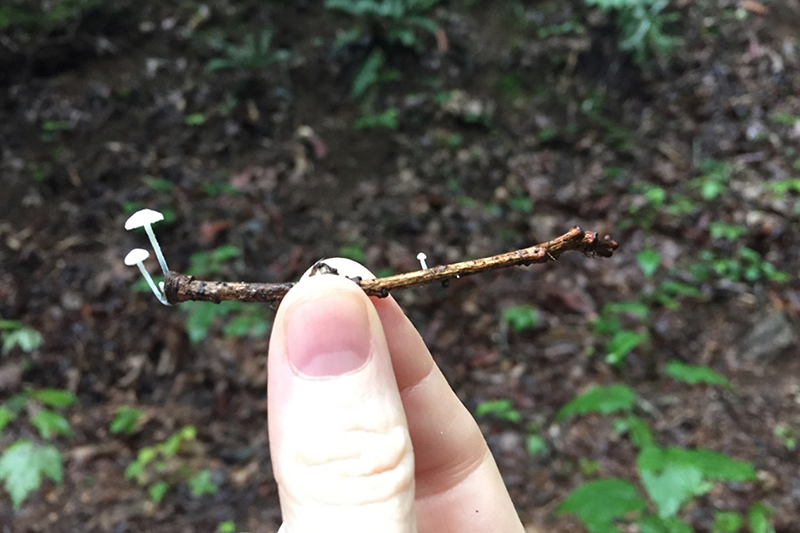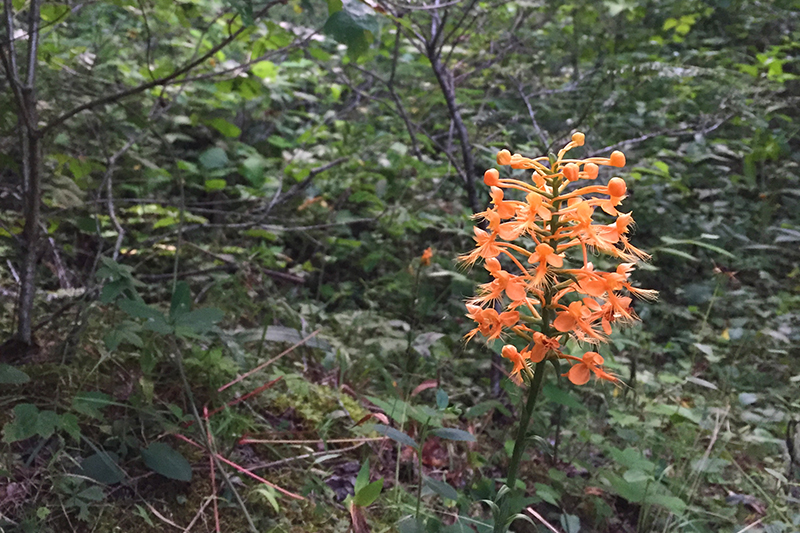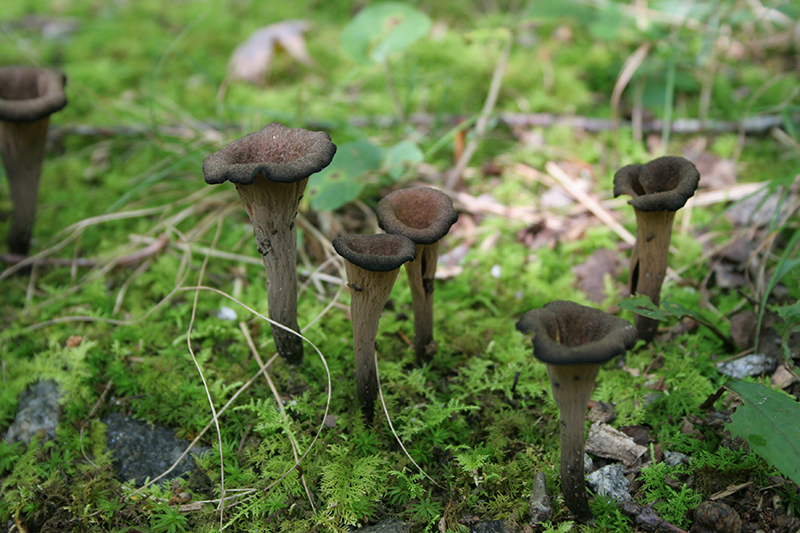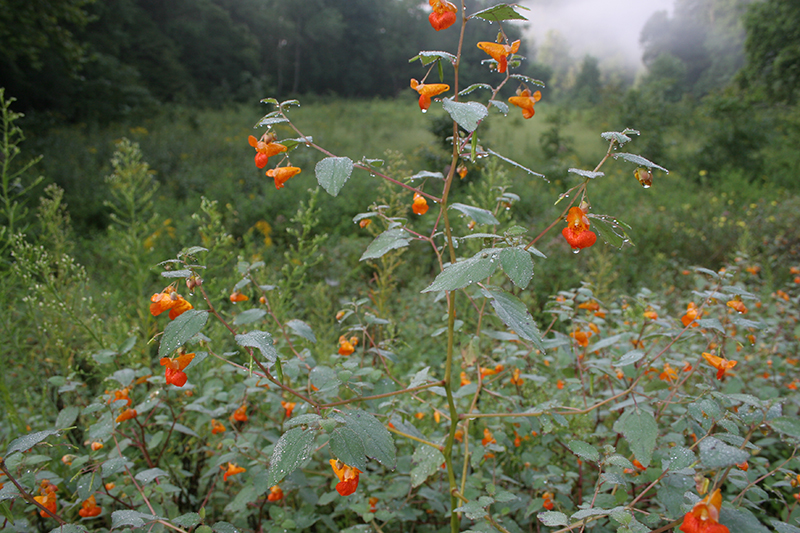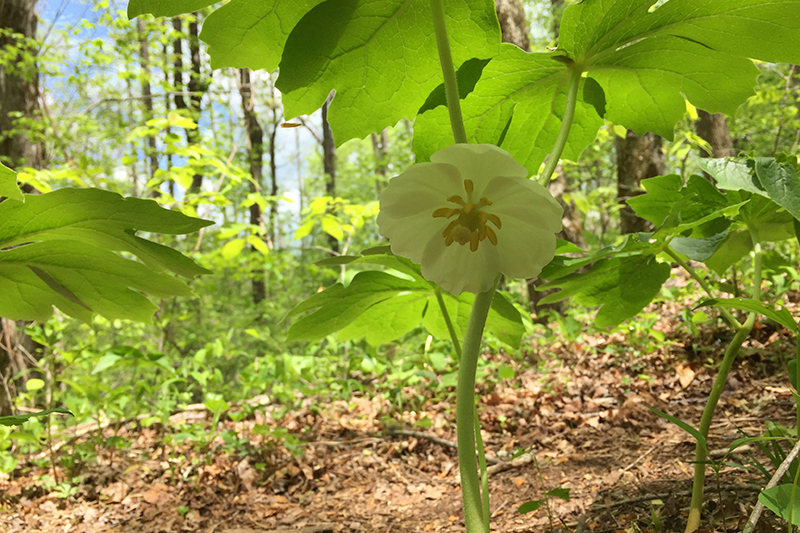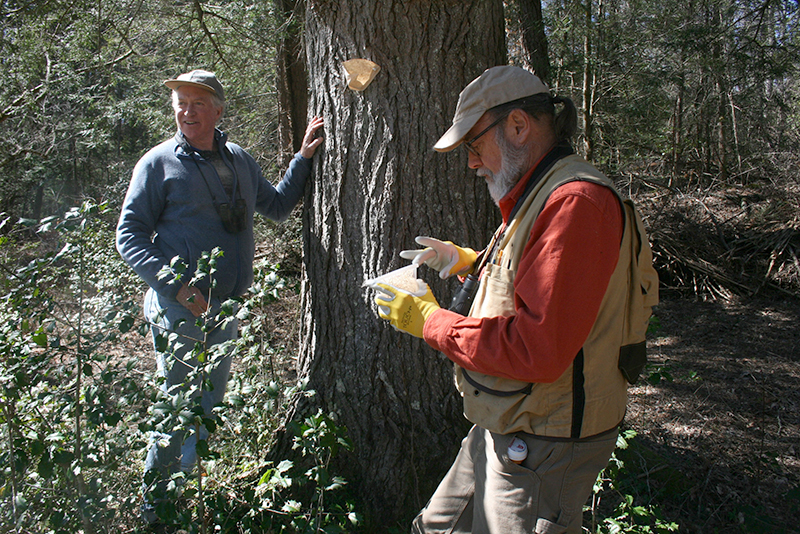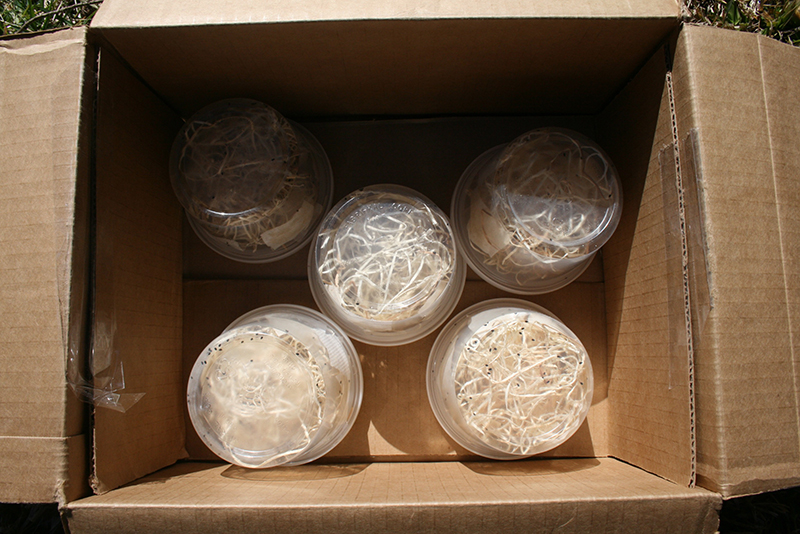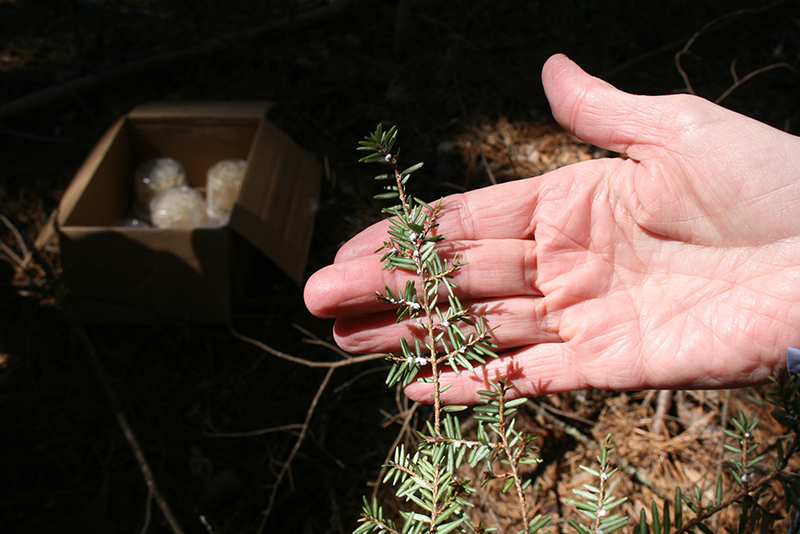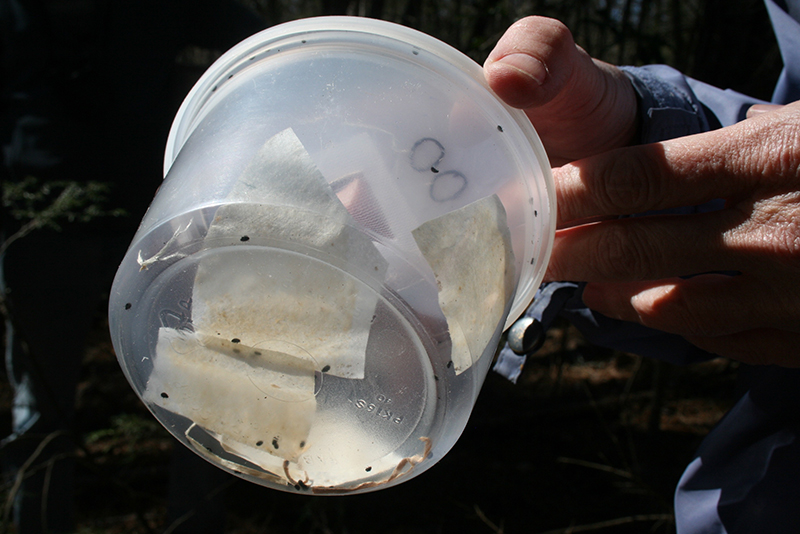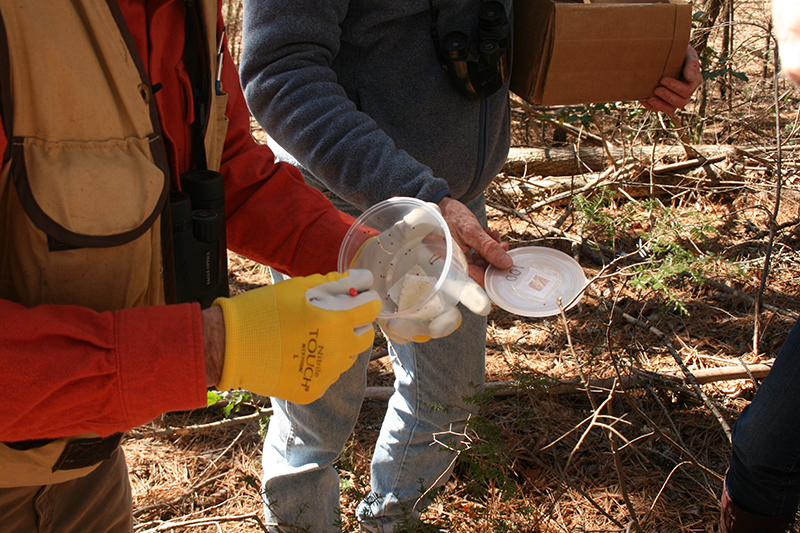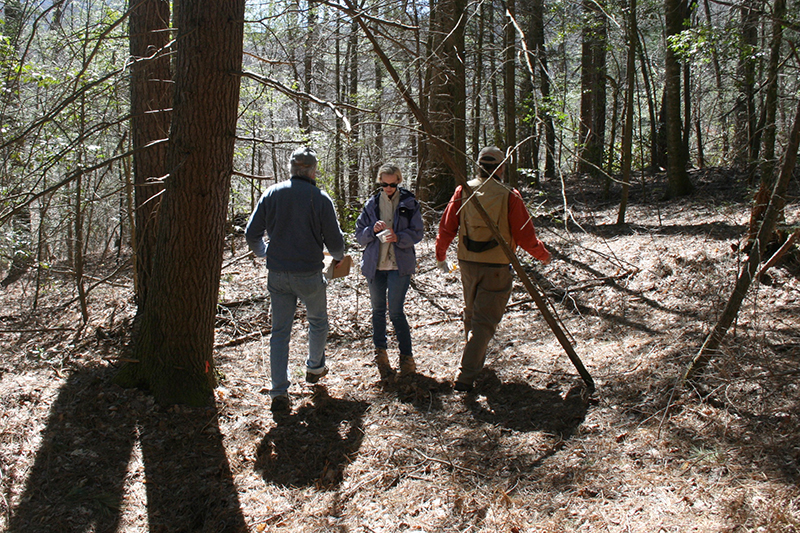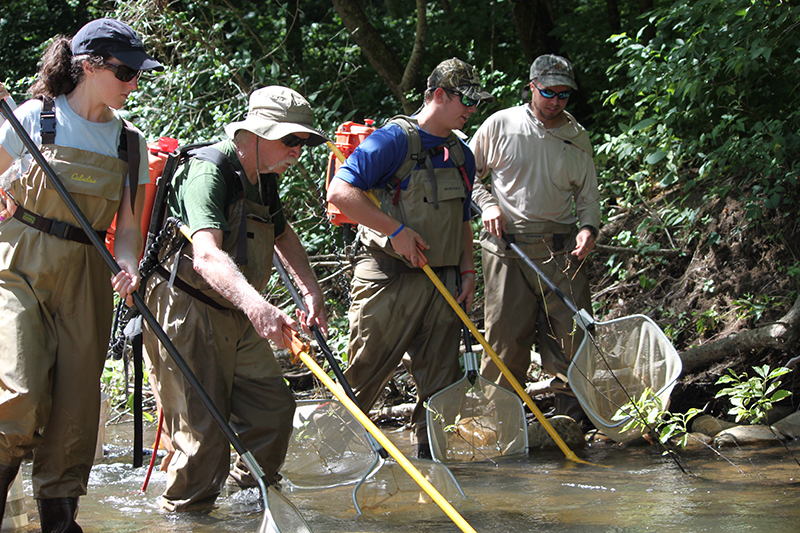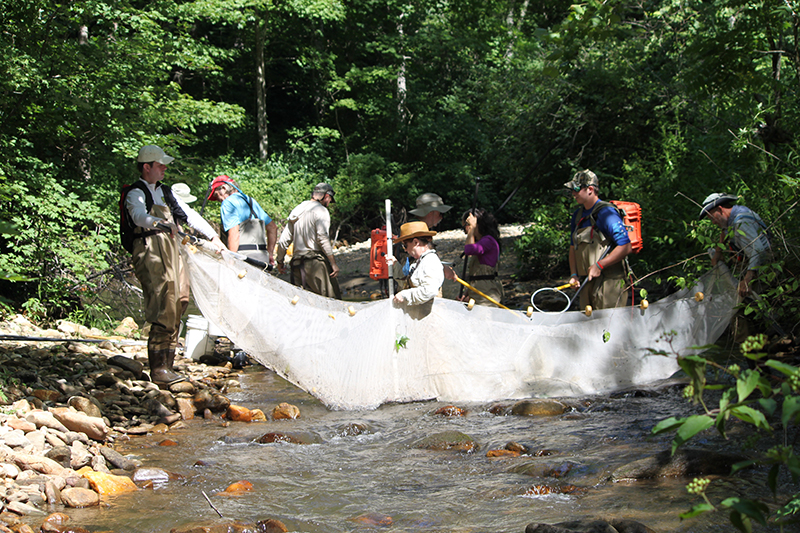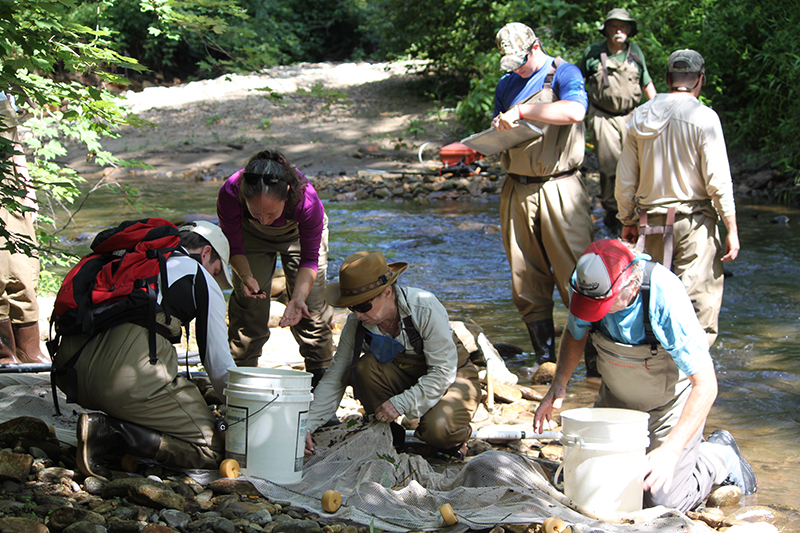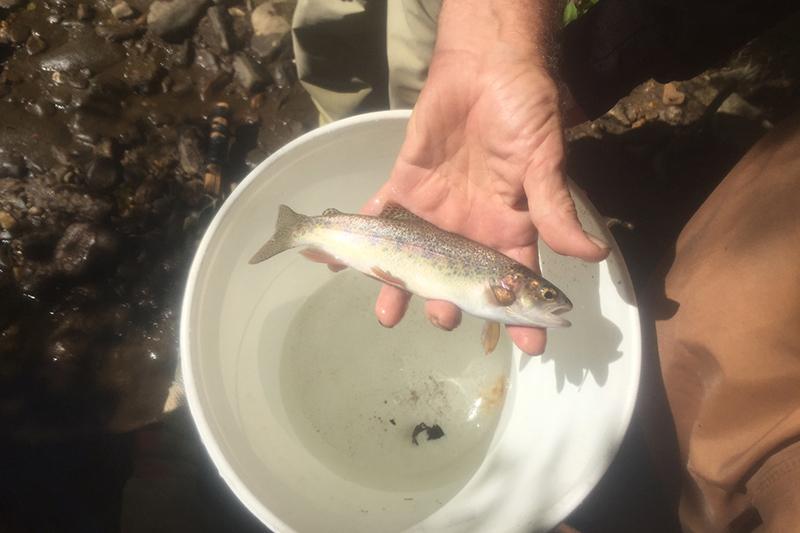ENVIRONMENTAL INITIATIVES
Resting on the slopes of the Southern Appalachians in the midst of a temperate rainforest, the Hambidge Center protects over 600 acres of forested land in the watershed of Betty’s Creek, fostering a magical and natural setting for creative inspiration and discovery. Mountain ridges rise over 1000 feet above the creek valley to the north and south to cradle Hambidge in an intimate setting that protects it from sound and from excess light in the night sky. Steep mountain slopes of poplar, oak, rhododendron, rock and waterfalls descend from the ridges and yield to wetlands and riparian woodlands along Betty’s Creek, a major tributary to the Little Tennessee River. Two miles of Betty’s Creek runs through the property, where Hambidge has performed ecological restoration of the creek and its riparian lands, and now protects it under a conservation easement with Mainspring Conservation Trust to further Hambidge’s perpetual mission of land stewardship.
The hardwood forests harbor the exceptional vegetative diversity that typifies the southern Appalachian mountains. Betty’s Creek contains the most diverse community of fish and crayfish in the upper Little Tennessee River basin in Georgia, and the lands adjacent to it contain a diverse community of birds and herpetofauna.
Volunteer initiatives over the years have included trail maintenance and construction, tree and shrub planting, control of invasive species; ecological studies of birds, reptiles, fish and benthic fauna; and environmental education. Volunteers are welcome to contact us and help us perpetuate our environmental mission on this precious mountain land.
Hemlock Preservation
Over the past several years, Hambidge has been working to save our hemlocks from the woolly adelgid, a non-native parasite that is decimating the hemlocks of eastern North America. Hambidge Fellows and dedicated volunteers, Michael Murrell and Tommye Scanlin, spear-headed the project and, after researching biocontrol restoration methods, connected with Dr. Patrick Horan, Georgia State University Professor Emeritus and hemlock ecosystem expert. With his help, we conducted a two-part release of several thousand Sasajiscymnus tsugae beetles – USDA-approved predator beetles that survive exclusively on the woolly adelgid. We’ve seen a moderate decline of the woolly adelgid population and hope to see continued improvement. With the help of Trustee Emerita Helen Meadors, we continue to monitor the health of our hemlocks and treat them as needed.
Biomonitoring Betty’s Creek
Beginning in 1990, the Upper Little Tennessee River Watershed Biomonitoring Program (currently administered by Mainspring Conservation Trust, based in Franklin, North Carolina) has investigated tributaries of the Little Tennessee from Fontana Reservoir in Swain County, North Carolina to the headwaters in Rabun Gap, Georgia, led by the efforts of fisheries biologist Bill McLarney. As measured by the Index of Biotic Integrity (IBI), derived from fish samples, Betty’s Creek has consistently, year after year, been the healthiest among the 19 largest tributaries, with Bioclass Ratings in the upper end of the Good range, occasionally approaching Excellent.
In an effort to further the good condition of Betty’s Creek and the surrounding habitat, a series of restoration activities were implemented by Hambidge beginning in December of 2004 with initial tree planting efforts by Hambidge board members, continuing through 2013 with final stream bank repairs. Mainspring, with the help of local volunteers including Hambidge staff and residents, followed this process with targeted monitoring, documenting the restoration’s effects on improving unstable eroding banks and the lack of shade on portions of the creek. These efforts were evaluated in 2014 and were determined to be successful. Read the report here.
Mainspring uses Betty’s Creek at the Hambidge Center as a Reference Site, against which to compare other streams of similar size. Among the species of interest protected there, perhaps the most spectacular is the hellbender, our largest salamander, in what is one of its few remaining habitats in Georgia. The 25 native species of fish recorded from the Hambidge property include three regional endemics – smoky dace, greenfin darter and Tuckasegee darter – as well as the endemic Little Tennessee River crayfish, proposed for listing as endangered.


